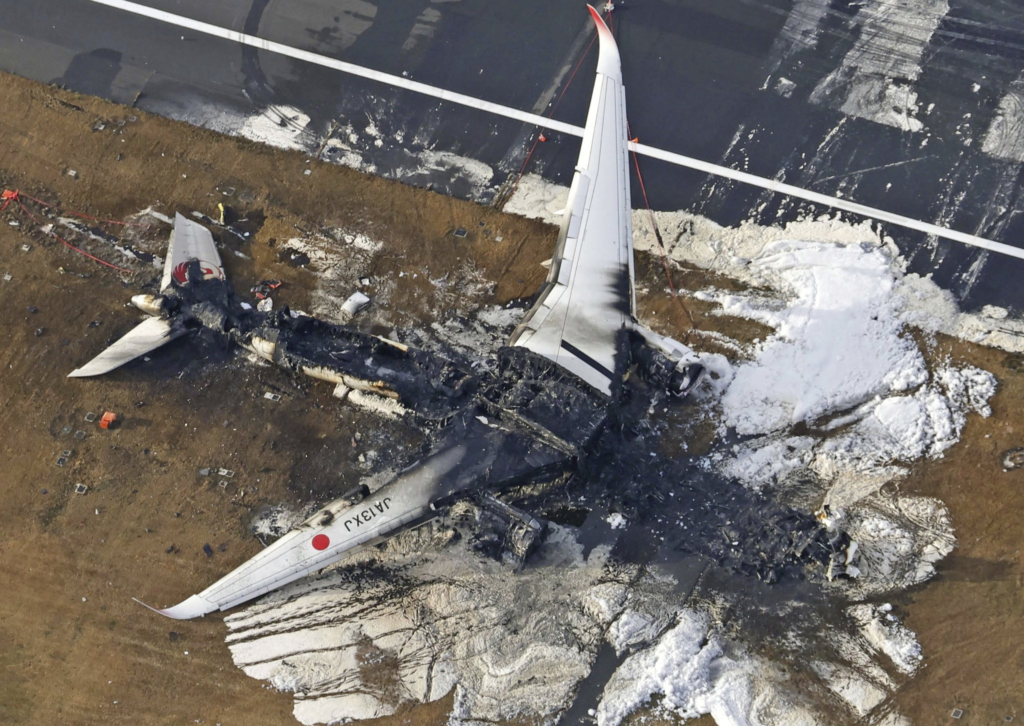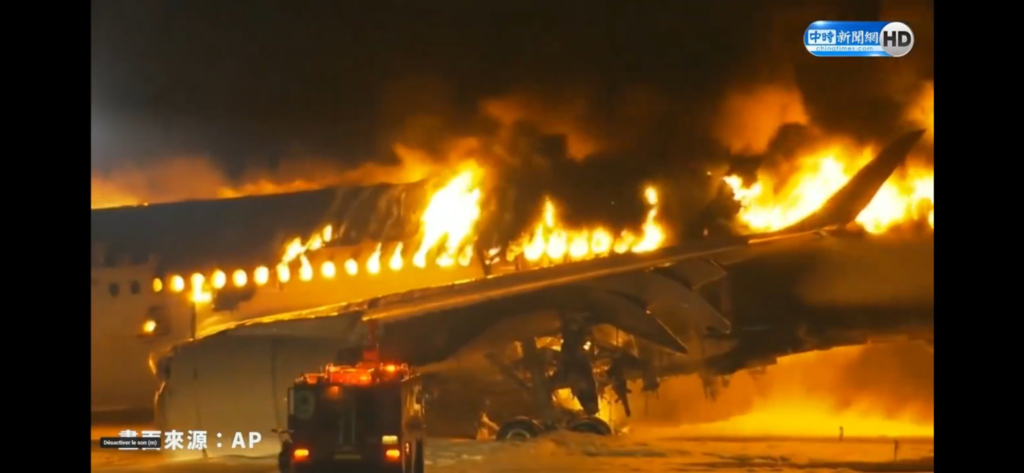TOKYO- According to Japanese broadcaster TBS, teams at Tokyo’s Haneda airport (HND) are set to initiate the removal of debris from a Japan Airlines (JL) plane, an Airbus A350, on Friday morning (January 5, 2023).
The incident occurred on Tuesday (January 2, 2024) when the Japan Airlines (JAL) Airbus A350 collided with a Japanese Coast Guard turboprop while landing on a runway in Tokyo.

Japan Airlines A350 Debris
All 379 individuals on the JAL aircraft successfully evacuated before it succumbed to flames, whereas tragically, five out of the six crew members on the Coast Guard craft lost their lives.
The removal process for the Coast Guard plane commenced on Thursday, as reported by TBS.
Transport authorities are actively examining the circumstances that led to the Coast Guard plane inadvertently entering the runway where the passenger jet was in the process of landing.
The Coast Guard plane, engaged in its third emergency mission to an earthquake-stricken area within a 24-hour period, collided with the passenger jet at a highly bustling airport.
As investigations have just commenced, aviation experts emphasize that it typically requires the failure of multiple safety safeguards for an airplane accident to occur.
The runway collision represents the first instance where a contemporary lightweight airliner has undergone combustion, serving as a litmus test for evaluating the performance of a new era of carbon-composite aircraft in the face of a severe fire.

JAL: No Visual Contact
The pilots on the Japan Airlines Airbus A350, which caught fire after all 379 passengers and crew had evacuated, had “no visual contact” with the coastguard aircraft involved in the crash, as stated by the airline on Thursday.
Additionally, the three pilots couldn’t initially see the fire from the cockpit and were alerted to it by the cabin crew, according to a JAL spokesperson.
A significant blaze engulfed the airliner, reducing it to a charred wreckage on the tarmac.
However, the pilots asserted that they had no “visual contact” with the other plane, although one of them did notice “an object” just before the impact, according to JAL.
The spokesman mentioned, “After the plane landed and around the time when the front wheels touched or were about to touch the ground — during those few seconds, they said they felt an impact.”
Simultaneously, the chief flight attendant, one of nine onboard, informed the cockpit about the fire, necessitating permission to open the emergency exits, as reported by broadcaster NHK. By this point, the cabin was filling with smoke, growing hotter, with infants crying and passengers pleading for the doors to be opened, as depicted in the footage.

Miracle Rescue
Although there were eight emergency exits available, the evacuation commenced from two slides at the front of the plane due to the presence of the fire.
The crew took matters into their own hands and opened a third exit at the rear because the malfunctioning intercom system prevented them from requesting the cockpit to do so.
The complete evacuation of the plane took 18 minutes, with the pilot being the last person to disembark onto the tarmac at 6:05 pm. Shortly after, the aircraft turned into an inferno, prompting dozens of fire engines to attempt to extinguish the blaze. This firefighting process ultimately extended for eight hours.
Stay tuned with us. Further, follow us on social media for the latest updates.
Join us on Telegram Group for the Latest Aviation Updates. Subsequently, follow us on Google News.

